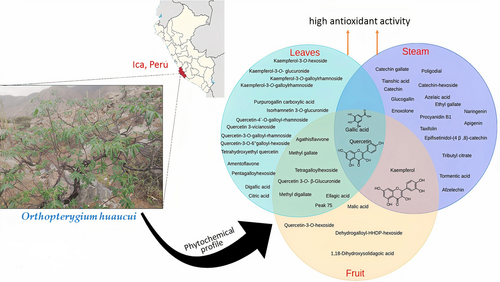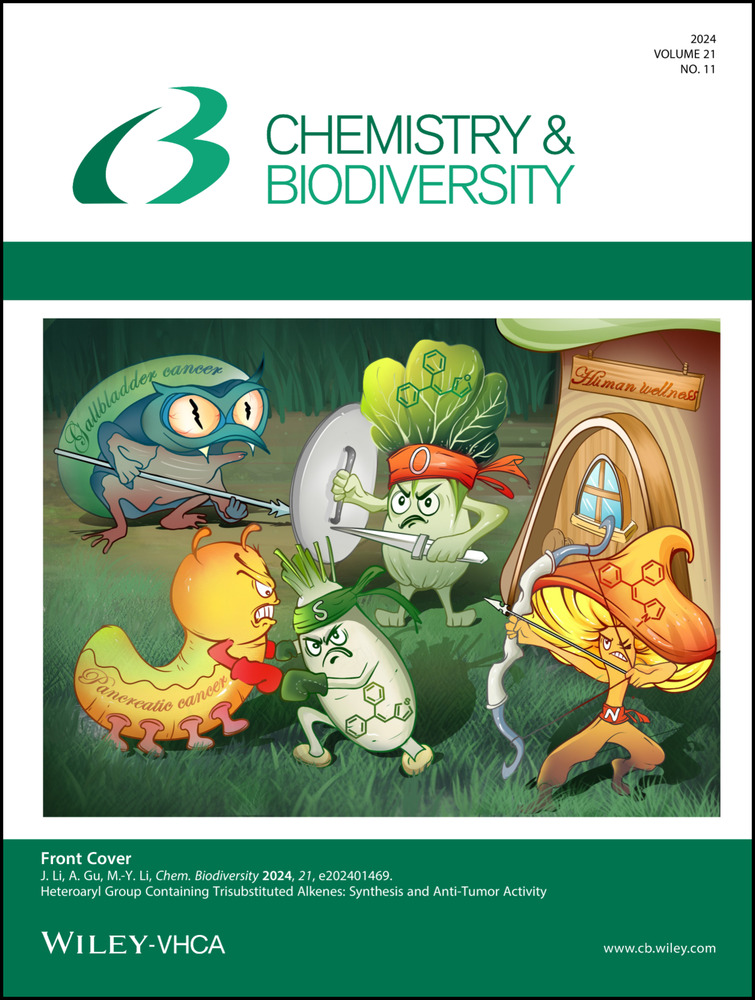Comprehensive Phytochemical Profile of Leaves, Stems and Fruits from Orthopterygium huaucui (A. Gray) Hemsl. and their Antioxidant Activities
Abstract
Orthopterygium huaucui, commonly known as “Pate”, is a medicinal shrub belonging to the Anacardiaceae family used locally to treat burns and stomach pains. Endemic to Peru, chemical studies on O. huaucui are limited. In this study, Ultra-High Performance Liquid Chromatography Quadrupole/Orbitrap Electrospray Ionization Tandem Mass Spectrometry (UHPLC Q/Orbitrap/ESI/MS/MS) was used to identify secondary metabolites in leaves, stems and fruits, and the antioxidant capacities of the different parts were compared. In addition, several compounds such as methyl gallate, gallic acid, kaempferol, quercetin, and quercetin 3-O-β-glucuronide were successfully isolated from the methanolic extract of the leaves of this species for the first time. Untargeted UHPLC Q/Orbitrap/ESI/MS/MS analysis tentatively identified seventy-six compounds in the different parts of the plant, showing that this species as an interesting source of flavonoids, procyanidins and tannins. The phenolic content in leaves and stems was 334.31±4.34 and 295.18±6.38 gallic acid equivalents/100 g dry plant, respectively, while that of fruits was lower (99.92±5.45 mg/100 g). Leaves had twice the flavonoid content than fruits (210.38±3.85 versus 87.42±3.85 quercetin equivalents/100 g). 2,2-Diphenyl-1-picrylhydrazyl (DPPH) results indicated high antioxidant activity in all parts, with stems and leaves showing IC50 of 12.8 μg/mL, and fruits showing less activity (IC50=38.6 μg/mL). The Oxygen Radical Absorbance Capacity (ORAC) test showed higher antioxidant values in the stems (467.82±21.17 μmol Trolox equivalents/100 g). This study provides valuable information on the chemistry of O. huaucui and highlights its antioxidant potential, especially in leaves and stems.
Graphical Abstract
Conflict of Interests
The authors declare they do not have any conflict of interest.
Open Research
Data Availability Statement
The NMR and LC–MS/MS raw files are available on request from the corresponding author.





